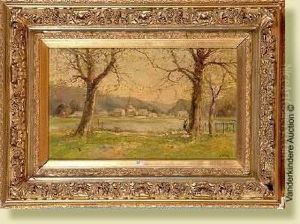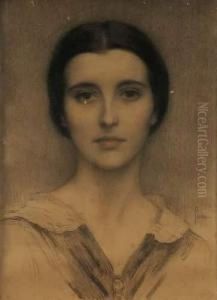Eugene D. Piron Paintings
Eugène D. Piron, also known as Eugène Piron, was a French artist born on July 31, 1875, in Lyon, France. He was primarily known for his work as a sculptor, but he also had talents in drawing and painting. Piron studied at the École nationale des beaux-arts de Lyon, where he honed his artistic skills. Later, he moved to Paris to further his studies and career, which was a common practice among artists seeking greater exposure and opportunities during that time.
Piron’s sculptures often reflected the Art Nouveau style, which was popular during the late 19th and early 20th centuries. This style was characterized by its use of flowing lines, natural forms, and ornamental details. In 1903, he received the Prix de Rome, an esteemed French scholarship for arts students, which allowed him to study at the French Academy in Rome at the Villa Medici. The Prix de Rome was considered one of the highest honors for young artists and architects, providing them with the chance to study classical art and architecture and to be exposed to the Italian Renaissance masters.
Throughout his career, Eugène Piron exhibited his work at various salons and exhibitions, including the Salon des artistes français, where he received an honorable mention in 1902, and later a gold medal in 1920. His sculptures often depicted allegorical subjects, mythological figures, and nudes, capturing the beauty and expressiveness of the human form.
Despite his success as an artist, there is limited information available about Piron’s personal life, which is not uncommon for historical figures whose lives were not well-documented outside of their professional achievements. Eugène D. Piron passed away on August 9, 1928, leaving behind a legacy as a skilled sculptor within the French artistic community of the early 20th century. His works continue to be appreciated by art historians and collectors, and they can be found in various art galleries and private collections today.

